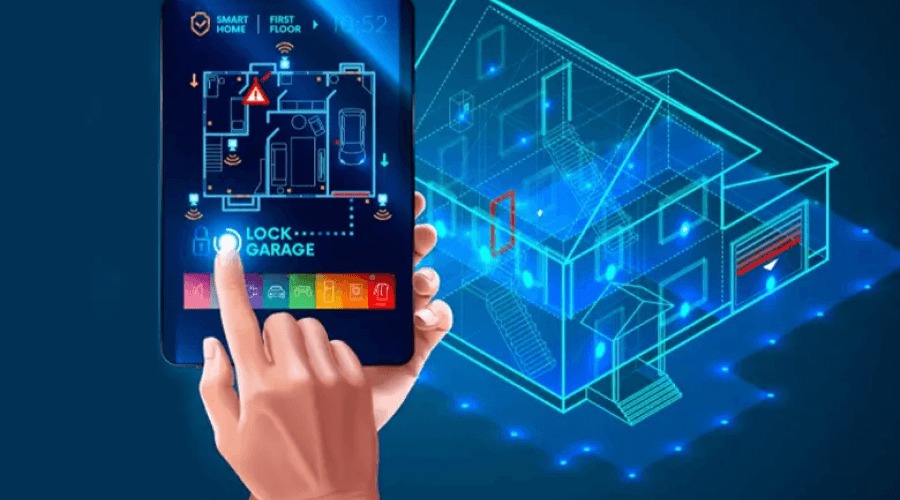
Smart Homes The Technological Revolution in Modern Living
Introduction: The Era of Smart Homes Has Begun
In an age of rapid technological advancement, the concept of a home is no longer just about walls and furniture—it has transformed into a living entity that interacts with its residents’ needs. Smart homes today are no longer a luxury but a modern necessity, offering comfort, security, and energy efficiency in astonishing ways. So, what exactly are smart homes? How do they work? And what are the latest technologies that can make your home “smart”?
1. What Is a Smart Home?
A smart home is a residence that uses internet-connected systems and devices (IoT, or Internet of Things) to monitor and control lighting, heating, cooling, security, entertainment, and other functions automatically or remotely.
- Smart devicescommunicate with each other via Wi-Fi, Bluetooth, or Zigbee.
- They can be controlled through your smartphone, voice commands, or AI.
Why Are Smart Homes the Future?
- ✅Energy Savings: Smart HVAC and lighting systems can reduce electricity bills by 30%.
- ✅Enhanced Security: Smart cameras, alarms, and locks.
- ✅Improved Comfort: Control everything with your voice or an app.
2. Top Smart Home Technologies in 2024
A) Smart Lighting Systems
- Smart LED bulbs(e.g., Philips Hue, LIFX) change colors and adjust brightness based on mood.
- Motion-activated lights: Turn on when you enter a room and off when you leave.
- Lighting schedules: Simulate occupancy when you’re away.
B) Smart Heating & Cooling (HVAC)
- Smart thermostats(e.g., Nest, Ecobee) learn your habits and adjust temperatures automatically.
- AI-powered ACcools your home just before you arrive.
C) Smart Security Systems
- Smart cameras(e.g., Arlo, Ring) send instant alerts when motion is detected.
- Smart door locksopen via fingerprint or smartphone.
- Fire and gas alarmsautomatically alert emergency services.
D) Smart Home Appliances
- Smart fridgesnotify you when groceries run low.
- Smart washersrun during off-peak energy hours.
- Robot vacuums(e.g., Roomba) map and clean your home autonomously.
3. How to Turn Your Home into a Smart Home (Step-by-Step Guide)
Step 1: Set Up the Infrastructure
- Strong Wi-Fi network: Use a high-speed router (preferably Wi-Fi 6).
- Central hub(e.g., Amazon Echo, Google Home).
Step 2: Add Essential Devices
- Smart bulbs(easiest starting point).
- Smart thermostat(immediate energy savings).
- Smart camera(for security).
Step 3: Integration & Centralized Control
- Use apps like Google Home or Apple HomeKitto control all devices from one place.
- Voice commands: “Hey Google, turn on the living room lights.”
4. Challenges of Smart Homes & How to Overcome Them
| Challenge | Solution |
| High cost | Start with basic devices and expand gradually |
| Device compatibility issues | Choose devices supporting protocols like Matter |
| Privacy concerns | Use a separate network for smart devices and update firmware |
5. The Future of Smart Homes: What to Expect by 2030?
- Fully AI-powered homes(predicting needs before you ask).
- Holographic interfaces(no physical screens needed).
- Reconfigurable smart furniture(e.g., walls transforming into furniture).
- Self-sufficient energy(solar panels, Tesla Powerwall batteries).
Conclusion: Is a Smart Home Worth the Investment?
The answer is yes! Smart homes aren’t just a trend—they’re an investment in comfort, security, and financial savings. Even if you start small, you’ll notice the difference quickly.
“A smart home isn’t one filled with technology—it’s one where technology fades into the background to serve you seamlessly.” – Smart Home Expert
Ready to make your home smart? Start with the simplest devices today and witness the transformation! 🚀🏠
Share this article with friends to spread the knowledge!
Key Takeaways:
✔ Smart homes automate comfort, security, and energy efficiency.
✔ Start with basics like smart bulbs and expand gradually.
✔ Future homes will be AI-driven and energy-independent.

0 comments